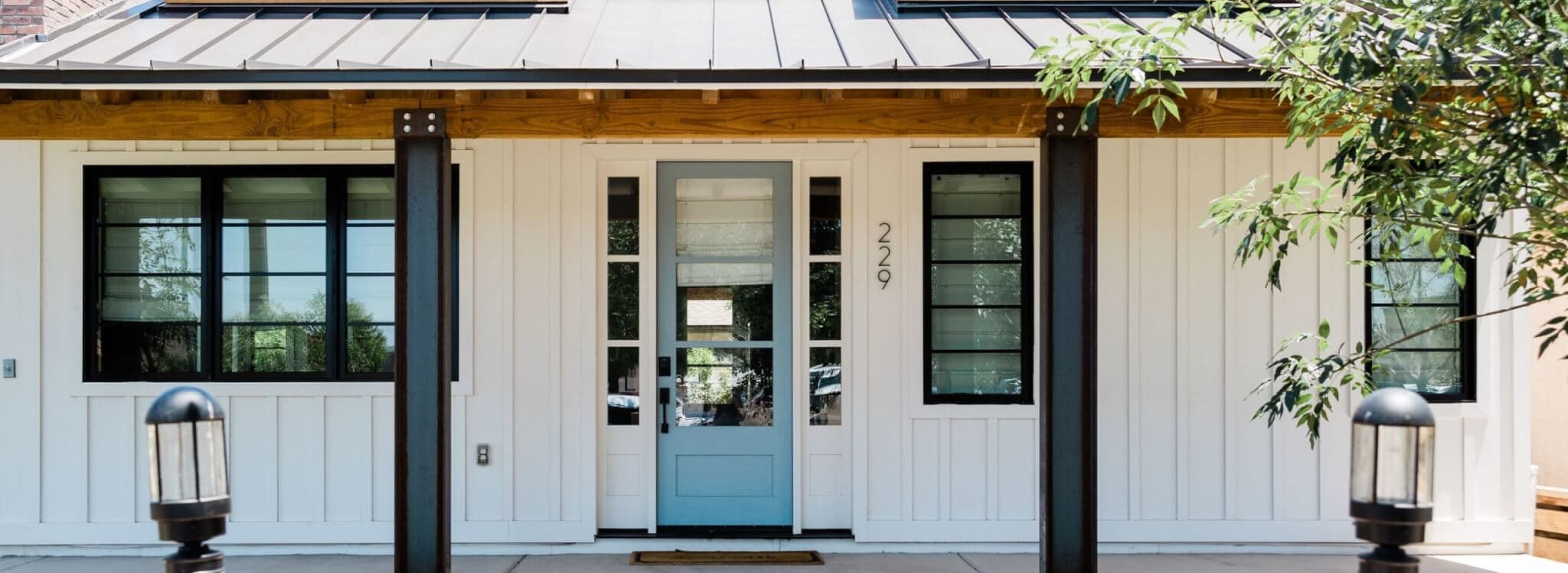The First-time Homebuyer’s Guide to Mortgages

As a first-time homebuyer who’s wondering how to apply for a mortgage, you probably have at least a few questions — but let’s begin with the basics. A mortgage is defined as a loan that’s specifically used to buy or maintain a home, land, or another type of real estate. The vast majority of the time, barring extenuating circumstances, you need a mortgage to purchase and own a home.
There are two types of mortgages: fixed rate, which provides a set payment amount for the life of the loan, and adjustable rate, which begins at a set interest rate for a period of time, then regularly fluctuates based on market conditions.
While it may seem quick and easy to secure a mortgage to buy a home, there’s actually quite a bit more involved than meets the eye. Read on for an overview of the process — from how to get approved for a home loan to what happens at the closing table — so you can be as prepared as possible.
Step 1: Preapproval
Who’s involved: Buyer, lender
How long it takes: One day – one week
The first step in any prospective home buyer’s journey is getting preapproved by a lender. Before picking one, make sure you shop around to compare rates and loan types, as well as different flavors of lender. You aren’t restricted to big banks, as there are local institutions and credit unions, online-only options, and more, so it can pay off to spend time doing your homework.
The lender will ask you questions about your credit score and income, before providing you with a specific maximum loan amount that you’re approved for. If you’re purchasing the home with another buyer, such as a spouse, you’ll both need to provide this information.
In order to place an offer on a home, you need to be preapproved for a mortgage first. Once you receive it, your home loan preapproval will last for 90 days — so it can be a good idea to get this taken care of before you begin seriously looking at properties. That way, you’re not rushing to obtain it once you find a house worth an offer.
Step 2: Property under contract
Who’s involved: Buyer, seller, real estate agent, lender
How long it takes: One – three days
Once you’re preapproved for a mortgage and put an offer on a home, you’ll need to have the offer accepted by the home’s seller. This process is typically initiated through an official offer letter that’s presented by your real estate agent to the seller’s agent, and outlines details like the offer price and closing costs. If your offer is accepted, you’ll likely need to move fairly quickly to get the property under contract.
This requires your lender to evaluate and approve the property. When you get the green light, the home is deemed under contract and taken off of the market. However, it’s important to note that this doesn’t by any means signify an official sale yet; simply that the sale is pending.
Step 3: Application
Who’s involved: Buyer, lender
How long it takes: One – three hours
While your potential new home is under contract, this is really only the beginning; next, you’ll need to fill out a mortgage loan application. Completing a standard application will take between one and three hours. You’ll need to answer questions about:
- The property you want to buy
- Personal details, including your marital status, current living situation, and employment
- Your monthly income and expenses
- Any assets and liabilities, including life insurance or retirement funds
Before you begin filling out the application, you should gather any relevant documents, including:
- The signed purchase and sale agreement for the new home
- W-2 statements for the past two years
- Tax returns for the past two years
- Pay stubs for the past two years
- Bank and savings account statements for the past two months
- Profit and loss statement, if self employed
Once the lender receives, reviews, and approves your completed application, they’ll provide you with a loan estimate that includes all potential closing fees and charges. Again, you aren’t obligated to move forward with a particular lender — in fact, if you have the time, it can be beneficial to compare estimates from a few different financial institutions to determine the best offer.
Step 4: Home inspection
Who’s involved: Buyer, inspector, (possibly) seller
How long it takes: Two – three hours for inspection
A home inspection allows a prospective homebuyer to hire a third-party individual to look at the interior and exterior of a home, which includes plumbing, electrical wiring, roofing, HVAC, and more. An inspection can be incredibly valuable, especially if the property is an older one, as it can uncover serious and/or costly issues that you as the homebuyer may be able to require the seller to address before going forward with the purchase.
While forgoing an inspection happens more frequently today in the interest of expediting the purchasing process, many lenders still will not finance the home without an inspection. If the inspection reveals a major problem, you typically have a week to walk away from the purchasing process.
Step 5: Underwriting
Who’s involved: Buyer, lender
How long it takes: Three days – three weeks
Underwriting is a critical piece of the mortgage process, but it’s also unfortunately the step where things can get a bit complicated. During this phase, your loan officer will hand your application and any required documentation over to an underwriter, who will review each piece thoroughly in order to confidently issue you the mortgage loan.
Sometimes, issues can pop up during the underwriting process that require you to provide more documentation than you originally anticipate — the inspection report, for example — and request that certain repairs be made prior to closing. How long does underwriting take? It varies widely depending on both the property and the lender; while it can be completed in as little as a few days, it can take up to a few weeks or longer in some cases.
Step 6: Loan commitment
Who’s involved: Buyer, lender
How long it takes: 20 – 45 days
If you’ve successfully made it through the underwriting process, the hardest part is done, but you still have a couple steps to go before you make it official. Once they’ve approved your application and completed the underwriting process, the lender will issue you a loan commitment letter that details the type of mortgage, how much money you’re borrowing, the terms and length of the loan, and the interest rate.
Step 7: Closing
Who’s involved: Buyer, seller’s representative, real estate agents (buyer’s and seller’s), attorneys (buyer’s and seller’s), closing agent (usually a title company employee), lender’s representative, notary public
How long it takes: One – two hours
The final — and most exciting — step in the homebuying process is the closing. While it depends on your particular situation, closing usually occurs about four to six weeks after the home goes under contract. It will typically take place at the office of the title company, your lender, or your attorney.
At the closing, you’ll be required to sign several different documents and pay your closing costs, which typically range between three and five percent of the loan total. Once this is done, you’ll receive the keys to your new home!
Buying your first home will require a lot of patience. It isn’t a quick process, but the steps to obtaining your home are in place to help ensure you’re purchasing a safe home that meets certain safety standards and that you can make the mortgage payments on the home. It pays to be organized and patient throughout the homebuying process.
Already purchased your home? Congratulations! Now it's time to start monitoring and growing your home equity with your Home Equity Dashboard.
You should know
We do our best to make sure that the information in this post is as accurate as possible as of the date it is published, but things change quickly sometimes. Hometap does not endorse or monitor any linked websites. Individual situations differ, so consult your own finance, tax or legal professional to determine what makes sense for you.
More in “Home financing 101”

How to Get Equity Out of Your Home Without Refinancing

5 Common Mistakes That Silently Erode Your Home Equity

